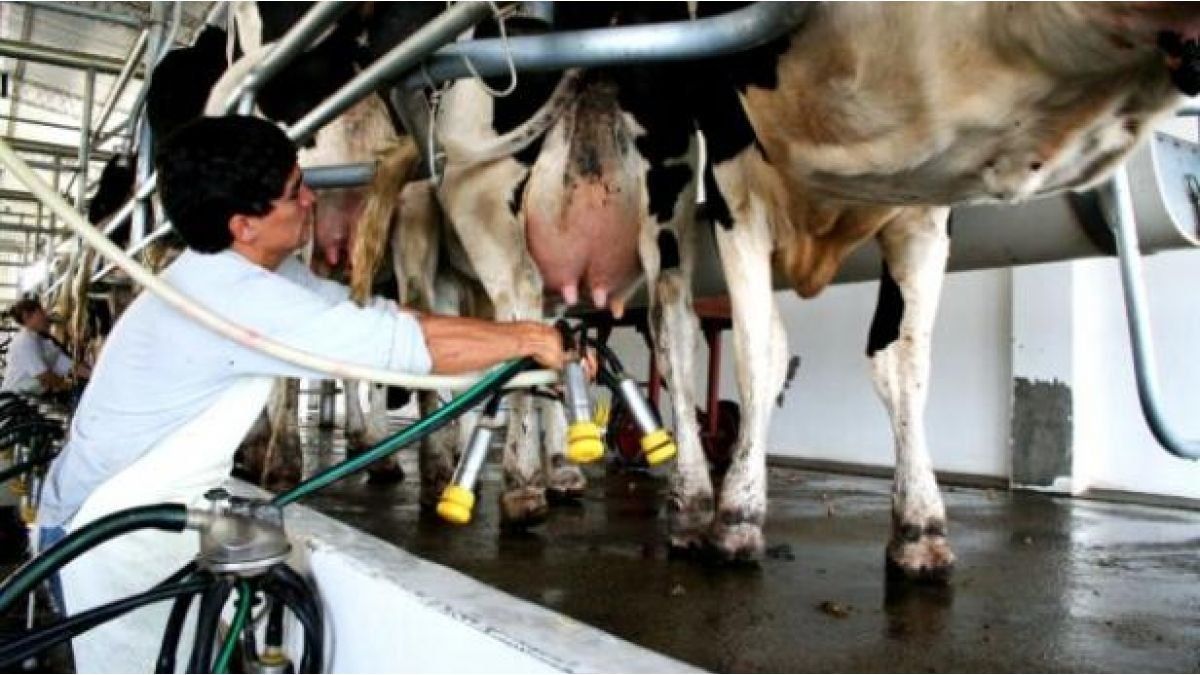This was stated in a report by the Institute for the Argentine Agroindustrial Developmentwhich detailed that production in the first quarter of this year was 2,224 million liters against 2,582 million liters in 2023.
According to the report, the primary productive sector is made up of about 10,200 dairy farms, which generate about 45,000 direct jobs and about 680 milk processing industries, with about 35,000 direct jobs; Thus, the activity is positioned as the sixth agro-industrial chain in volume of work generated.
Of those 680 industries46% process less than 5,000 liters per day45% between 5001 and 250,000 liters per day and only 3% process more than 250,000 liters per day.
Of this, 44% are located in the province of Buenos Aires, 27% in Córdoba, 15% in Santa Fe, 10% in Entre Ríos, 3% in La Pampa and the rest in other provinces.
In the accumulated of the first quarter, the Exports increased 6.4% compared to the same period of the previous year, totaling almost 100 thousand tons in products and 6.3% in equivalent liters, despite the fact that in March they had a decline.
The products that had a The largest participation in volume in the quarter’s exports were milk powder, with a growth of 18.8%, and cheeses, with 11.1%.
First quarter exports represented el 30.1% of the volume of milk produced when in 2023with greater production, the export-production ratio was 24.4%, detailed the Institute led by former Minister of Agroindustry Julián Domínguez.
milk dairy cow dairy industry.jpeg
Exports in the first quarter represented 30.1% of the volume of milk produced when in 2023
Milk: consumption data
Argentina is one of the countries with highest milk consumption in the world, with per capita consumption that varied over the years: the latest data indicate that in 2023 it reached 194 liters per inhabitant per year.
Last year, the European Union was the one with the highest consumption in the world with 280 liters (Sweden and Holland stood out with 355 and 330 liters respectively), followed by the United States with 278 liters, New Zealand with 250 liters, Uruguay with 230 liters, Costa Rica with 200 liters and then Argentina.
In another order, the sector report pointed out that Dairy sales showed a drop in the first quarter of the year 18.7% in tons of product -compared to the same period in 2023- and 15.3% in equivalent liters.
Dairy consumption, expressed in tons, accumulated a drop of 18.7% year-on-year in the first quarter of 2024.
Meanwhile, fluid milks represent 21% of consumption and powdered milks 8%.
On this point, the work detailed that the consumption of fluid milk accumulated a fall of 19.6% in the first quarter of the year and that of powdered milk of 30.4% (both expressed in tons) compared to the same quarter of 2023.
For its part, cheeses represent approximately 60% of dairy consumption; In this area, the drop in consumption in the first quarter was 10.4% in tons, but 8.8% in equivalent liters.
Source: Ambito




